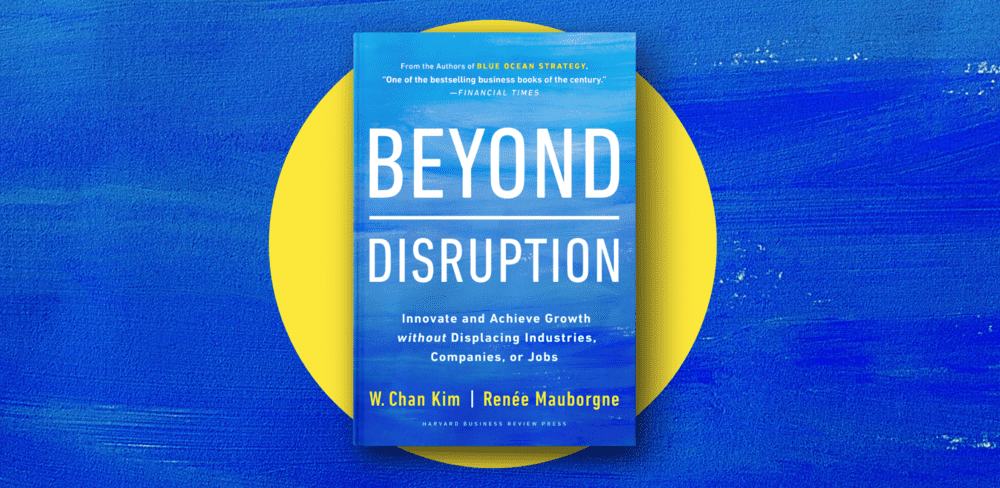Blue Ocean Strategy Vs Disruption Innovation Strategy: What You Need to Know

In the dynamic landscape of business strategy, two prominent approaches have emerged to navigate the competitive waters. We will focus on the Blue Ocean Strategy and the Disruption Innovation Strategy. The service approaches these challenges differently through their individual methods that eventually lead up to the creation of business worth.
What are the Key Differences between Blue Ocean Strategy and Disruption?
If you are asking what is blue ocean strategy and difference between disruption in business innovation strategies,we will consider each one of these and talk about what makes them different from each other.
The Blue Ocean Strategy, created by Renée Mauborgne and W. Chan Kim in their book by a similar name, stands for a way of strategic thinking that does not concentrate on competition and leads to an uncontested market environment. The underlying principle of this method consists of transitioning from competition in the “red oceans,” where other providers already occupy market spaces, to a quest for new markets (blue oceans) where demand is yet to be discovered, and competition is either small or completely insufficient. In doing this, the organization should be creative in its approach on value proposition, value delivery, and market segmentation. That way, business growth with the blue ocean is inevitable.
The key Blue Ocean Strategy principles include:
- Value Innovation: This entitles the company to carry on the dual-track strategy of differentiating from competition and low prices, leading to a leap in added value for the customers and the company.
- Focus on Non-Customers: In the context of the blue ocean strategy, attention is on creating new opportunities by attracting non-consumers or potential users who have not yet made any decisions from existing offers.
- Strategic Canvas: This resource is useful, as it assists a firm in outlining its strategy and making sense of the secession from rivals.
- Four Actions Framework: This model is used as a guide, which helps companies develop strategies for doing away with risk areas, reducing, changing, and creating markets across the production chain to get ahead of other similar enterprises.
What are some real-world examples of companies that successfully implemented the Blue Ocean Business Strategy?
Making true blue oceans does not only mean persistent winning on fair pricing and more features, but also, companies can escape the predicament of price rulers and difference makers that only focus on features. A good example of a company that made Blue Ocean successful in practice is adopting the approach of Cirque du Soleil, which reconstructed the circus industry by bringing it to theater and circus customers.
Disruption
In the book by Clayton Christensen, “The Innovator’s Dilemma,” is mentioned what the term “disruption” means. It is the process where, this time, the smaller company with limited resources successfully challenges the old ones by introducing less complicated, more convenient, or less expensive items. Naturally, the typical disruption through innovation identifies and captures the erstwhile values or prospects underexploited or overshadowed that nip at the heels of the establishment until they break through the barrier.
Key characteristics of disruptive innovations include:
- Simplicity and Accessibility: Disruptive innovation, at the initial stages, is characterized by creating products and services that are easy to use and accessible to most people.
- Lower Cost Structure: Disruptive innovations are the ones that mostly utilize new technologies or business models to present their products or services at a low rate, generally compared to the high prices of current solutions.
- 3. Market Entry Strategy: New market players who shake up the landscape may do so by starting at the bottom or by niche offerings, later on, leveling up or superseding the competitors by offering better alternatives.
Could you provide more examples of disruptive companies and their impact on existing markets?
Unlike the Blue Ocean Strategy, which addresses new market formation, where distinct new products or solutions are brought into the market for demand creation, disruption involves having a competing new approach that changes the existing competitive landscape. To illustrate a disruptive innovation, one can take Airbnb in the hotel industry or Uber in the transportation industry. In contrast, Airbnb has replaced traditional hotels by offering affordable lodging options. Uber has presented a convenient and cheaper ride-hailing service as an alternative to taxi service.
Differences
Unlike these two strategies, disruption quests to develop original ideas and create value, while the Blue Ocean Strategy applies a different approach with different goals. Aqua Ocean Strategy is about discovering possibilities and crafting new value proposals, while disruption is about bringing new solutions to replace incumbents from existing markets. Blue Ocean Strategy, firstly, encapsulates differentiation and value innovation, whereas disruption, at the onset, mostly offers simpler, more accessible products, resulting in gradual improvement to a higher brand.
Final Thoughts
Blue Ocean Strategy and disruption are not the same thing. Blue Ocean Strategy puts forward various principles, while disruption uses different strategies to ensure a combination of two, a radical innovation. Conversely, undertaking a Blue Ocean Strategy means merchants view opportunities to redraw the lines of an industry and stir up new demand. By contrast, disruption stands for the penetration of markets with alternative solutions that undermine the incumbents. Implementing competitive intelligence has shown that both methodologies can stimulate growth and give the chance to challenge the existing approaches to the companies that are willing to innovate the systems and favor transformation.




